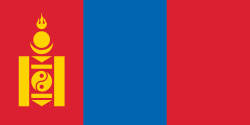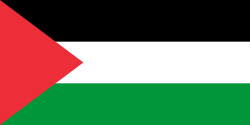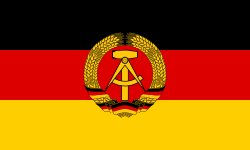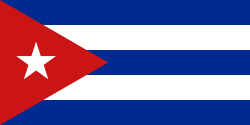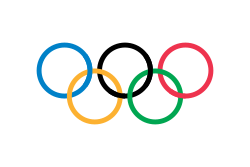Ha Hjong-ču
| Ha Hjong-ču | |
|---|---|
| Narození | 3. června 1962 (61 let) Čindžu |
| Alma mater | Dong-A University Univerzita Sŏnggjungwan |
| Povolání | judista |
| Zaměstnavatel | Dong-A University |
| Některá data mohou pocházet z datové položky. Chybí svobodný obrázek. | |
| Přehled medailí | ||
|---|---|---|
| zlato | LOH 1984 | polotěžká váha |
| Mistrovství světa v judu | ||
| stříbro | MS 1985 | polotěžká váha |
| bronz | MS 1981 | polotěžká váha |
| bronz | MS 1987 | polotěžká váha |
Ha Hjong-ču (korejsky 하 형주), (anglicky Ha Hyung-joo, Ha Hyoung-zoo), (* 3. června 1962 v Čindžu, Jižní Korea) je bývalý korejský zápasník – judista, olympijský vítěz z roku 1984.
Sportovní kariéra
Členem seniorské reprezentace byl od počátku osmdesátých let. V roce 1984 si vybojoval účast na olympijských hrách v Los Angeles a výborně načasoval formu. Po postupu ze semifinále, přes svého oblíbeného soupeře Němce Günthera Neureuthera, ve finále uhlídal nebezpečného Brazilce Douglase Vieirou a získal nečekaně zlatou olympijskou medaili. V roce 1988 obhajoval vítězství před domácím publikem na olympijských hrách v Soulu. V předpokládanému finále mezi ním a Japoncem Hitoši Sugaijem však nedošlo, v prvním kole nestačil na belgického matadora Roberta Van de Walle. Sportovní kariéru ukončil v roce 1990. Pracuje jako sportovní psycholog.
Výsledky
Váhové kategorie
| Turnaj | 1981 | 1982 | 1983 | 1984 | 1985 | 1986 | 1987 | 1988 |
|---|---|---|---|---|---|---|---|---|
| 19 | 20 | 21 | 22 | 23 | 24 | 25 | 26 | |
| polotěžká váha | ||||||||
| Olympijské hry | 1. | úč. | ||||||
| Mistrovství světa | 3. | — | 2. | 3. | ||||
| Asijské hry | 1. | |||||||
| Mistrovství Asie | 2. | — | — | |||||
Bez rozdílu vah
| Turnaj | 1981 | 1982 | 1983 | 1984 | 1985 | 1986 | 1987 | 1988 |
|---|---|---|---|---|---|---|---|---|
| 19 | 20 | 21 | 22 | 23 | 24 | 25 | 26 | |
| Mistrovství světa | úč. | — | — | — | ||||
| Mistrovství Asie | 1. | — | — | |||||
Podrobnější výsledky
Olympijské hry
| Rok | Kategorie | 1/32 | 1/16 | čtvrtfinále | semifinále | finále | |
|---|---|---|---|---|---|---|---|
| LOH 1984 | polotěžká váha | výhra – 1:09/hrg | výhra – yuk/dab | výhra – 2:20/suk+ksk | výhra – yuk/dab | výhra – (yus) | |
| LOH 1988 | polotěžká váha | prohra – 1:59/? | — | — | — | — |
Mistrovství světa
| Rok | Kategorie | 1/32 | 1/16 | čtvrtfinále | semifinále | opravy | o bronz | finále | |
|---|---|---|---|---|---|---|---|---|---|
| MS 1981 | polotěžká váha | výhra | výhra | výhra | prohra | — | výhra | — | |
| MS 1983 | polotěžká váha | neúčastnil se – bojkot mistrovství světa v Moskvě jihokorejskou reprezentací za sestřelení jihokorejského civilního letadla | |||||||
| MS 1985 | polotěžká váha | volný los | výhra | výhra | výhra | — | — | prohra | |
| MS 1987 | polotěžká váha | výhra | výhra | prohra | — | výhra | výhra | — | |
Reference
Externí odkazy
- Výsledky a novinky Ha Hjong-čua na Judoinside.com
- Ha Hjong-ču v databázi Olympedia (anglicky)
Média použitá na této stránce
Olympic Rings without "rims" (gaps between the rings), As used, eg. in the logos of the 2008 and 2016 Olympics. The colour scheme applied here was specified in 2023 guidelines.
Olympic Rings without "rims" (gaps between the rings), As used, eg. in the logos of the 2008 and 2016 Olympics. The colour scheme applied here was specified in 2023 guidelines.
The flag of the Dominican Republic has a centered white cross that extends to the edges. This emblem is similar to the flag design and shows a bible, a cross of gold and 6 Dominican flags. There are branches of olive and palm around the shield and above on the ribbon is the motto "Dios,Patria!, Libertad" ("God, Country, Freedom") and to amiable freedom. The blue is said to stand for liberty, red for the fire and blood of the independence struggle and the white cross symbolized that God has not forgotten his people. "Republica Dominicana". The Dominican flag was designed by Juan Pablo Duarte, father of the national Independence of Dominican Republic. The first dominican flag was sewn by a young lady named Concepción Bona, who lived across the street of El Baluarte, monument where the patriots gathered to fight for the independence, the night of February 27th, 1844. Concepción Bona was helped by her first cousin María de Jesús Pina.
The flag of the Dominican Republic has a centered white cross that extends to the edges. This emblem is similar to the flag design and shows a bible, a cross of gold and 6 Dominican flags. There are branches of olive and palm around the shield and above on the ribbon is the motto "Dios,Patria!, Libertad" ("God, Country, Freedom") and to amiable freedom. The blue is said to stand for liberty, red for the fire and blood of the independence struggle and the white cross symbolized that God has not forgotten his people. "Republica Dominicana". The Dominican flag was designed by Juan Pablo Duarte, father of the national Independence of Dominican Republic. The first dominican flag was sewn by a young lady named Concepción Bona, who lived across the street of El Baluarte, monument where the patriots gathered to fight for the independence, the night of February 27th, 1844. Concepción Bona was helped by her first cousin María de Jesús Pina.
Flag of Canada introduced in 1965, using Pantone colors. This design replaced the Canadian Red Ensign design.
This is the national flag of Belgium, according to the Official Guide to Belgian Protocol. It has a 13:15 aspect ratio, though it is rarely seen in this ratio.
Its colours are defined as Pantone black, Pantone yellow 115, and Pantone red 032; also given as CMYK 0,0,0,100; 0,8.5,79,0; and 0,94,87,0.Flag of the Socialist Federal Republic of Yugoslavia (1946-1992).
The design (blazon) is defined in Article 4 of the Constitution for the Republic of Yugoslavia (1946). [1]
(c) I, Cmapm, CC BY-SA 3.0
The flag of the Soviet Union (1955-1991) using a darker shade of red.
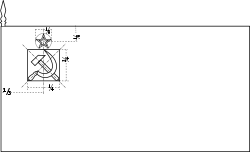
(c) I, Cmapm, CC BY-SA 3.0
The flag of the Soviet Union (1955-1991) using a darker shade of red.

Variant version of a flag of Japan, used between January 27, 1870 and August 13, 1999 (aspect ratio 7:10).
Olympijská vlajka
Flag of South Korea (1949-1984)
Flag of Belarus 1995-2012
Vlajka České republiky. Podoba státní vlajky České republiky je definována zákonem České národní rady č. 3/1993 Sb., o státních symbolech České republiky, přijatým 17. prosince 1992 a který nabyl účinnosti 1. ledna 1993, kdy rozdělením České a Slovenské Federativní republiky vznikla samostatná Česká republika. Vlajka je popsána v § 4 takto: „Státní vlajka České republiky se skládá z horního pruhu bílého a dolního pruhu červeného, mezi něž je vsunut žerďový modrý klín do poloviny délky vlajky. Poměr šířky k její délce je 2 : 3.“
The flag of Brazil from 1968 to 1992 with 23 stars.








